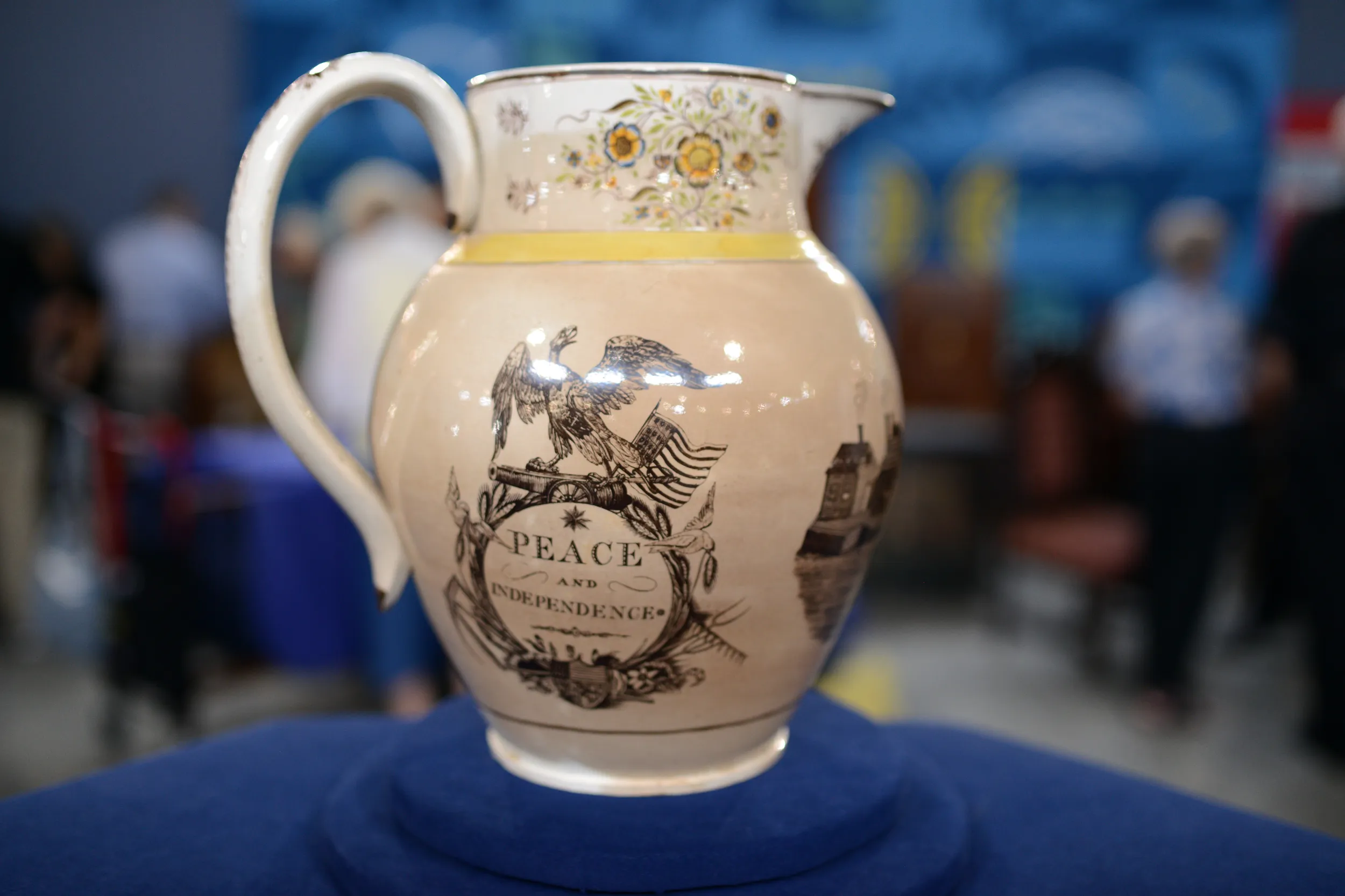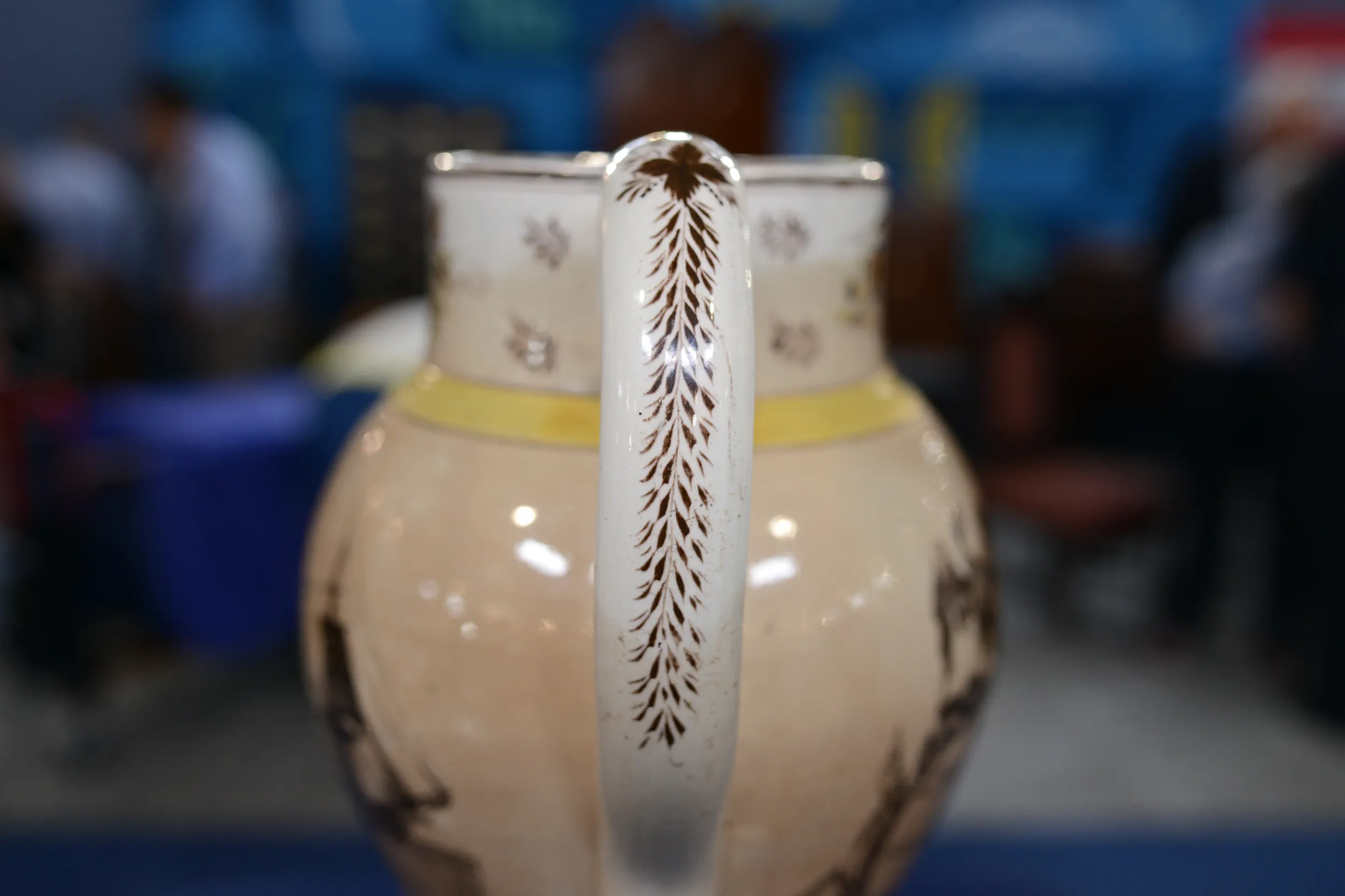GUEST: It's something that's been in my family for four generations, I can track back. It was inherited by my grandmother in a house up in Massachusetts. I think it's transferware they call it, I thought. And it's, I thought, porcelain from England, and then the artwork is transferred onto it, but that's as little as I know.
APPRAISER: Okay, well, actually, this is made of pottery instead of porcelain, and you're correct, it was made in England. It was made in the Staffordshire region, and it was made for export to the United States. It's got great decoration on it, so let's take a look at some of the decoration. Here on the side, we've got a wonderful American scene. We've got an eagle, an American flag, a cannon, and it says, "Peace and independence," but all kinds of paraphernalia relating to American independence, which is really wonderful. So obviously, it would've been made for the United States.
GUEST: Yeah.
APPRAISER: And if we keep spinning it around, we've got a terrific clipper ship, but this one happens to have an American flag, another sign that it's for America. And these are transfer-printed, not hand-painted. However, the decoration at the top is all hand-painted, so we've got a combination of hand painting and transfer. But then we've got the most important scene on the front: we've got a harbor scene. First of all, we have a lighthouse here. This is a lighthouse built of wood, and it's one of the earliest lighthouses in North Carolina. Wow. This depicts an actual place. It says, "A north view of Governor Wallace's Shell Castle and Harbor, North Carolina." Shell Castle was built starting around 1789. It was heavily damaged in 1806 by a hurricane and was completely closed by 1812. So this jug was made before 1812, but I would guess around 1805, something like that.
GUEST: Wow.
APPRAISER: Now, it says here, "Governor Wallace's." There was no governor of North Carolina ever named Wallace.
GUEST: Oh, no?
APPRAISER: But "governor," if you think of films you've seen where they call someone governor, it's relating to an important person, but he's like the manager. He was one of the builders of the port.
GUEST: I always thought it was the governor of the state.
APPRAISER: Right. Now, these buildings show the various buildings that were built there. There was a grist mill, there was a tavern, there was a store, there were all kinds of buildings built. It was actually a little island. Here, we see a ship coming into the harbor, you see an American flag. Now, this is an exceptionally large thing. These things were normally made for just presentation. It wouldn't be one of a kind, there would be more than that. But this one was actually used because it was... it's heavily stained. There's some grease and oils have soaked into it.
GUEST: What would you use it for?
APPRAISER: Well, you could have used it for cider or beer or water. But it would be awfully heavy once you put something in it to serve. I did some research, and there's... I only could find evidence of one other of these in existence. Now, there are probably more, but I could only find evidence of one, and it is located at the Museum of History in Raleigh, North Carolina. But I could find no auction records, I found nothing else about this jug. So it is exceptionally rare. Now, things made for the American market are much more common made for Boston, Philadelphia, New York, but things for Southern areas are much rarer. So based upon the size, the decoration, the historical importance, I would think that a retail value for this, despite the condition issues, would probably be between $8,000 and $12,000.
GUEST: Wow.
APPRAISER: And that's just pure speculation. That history of it is really interesting.













